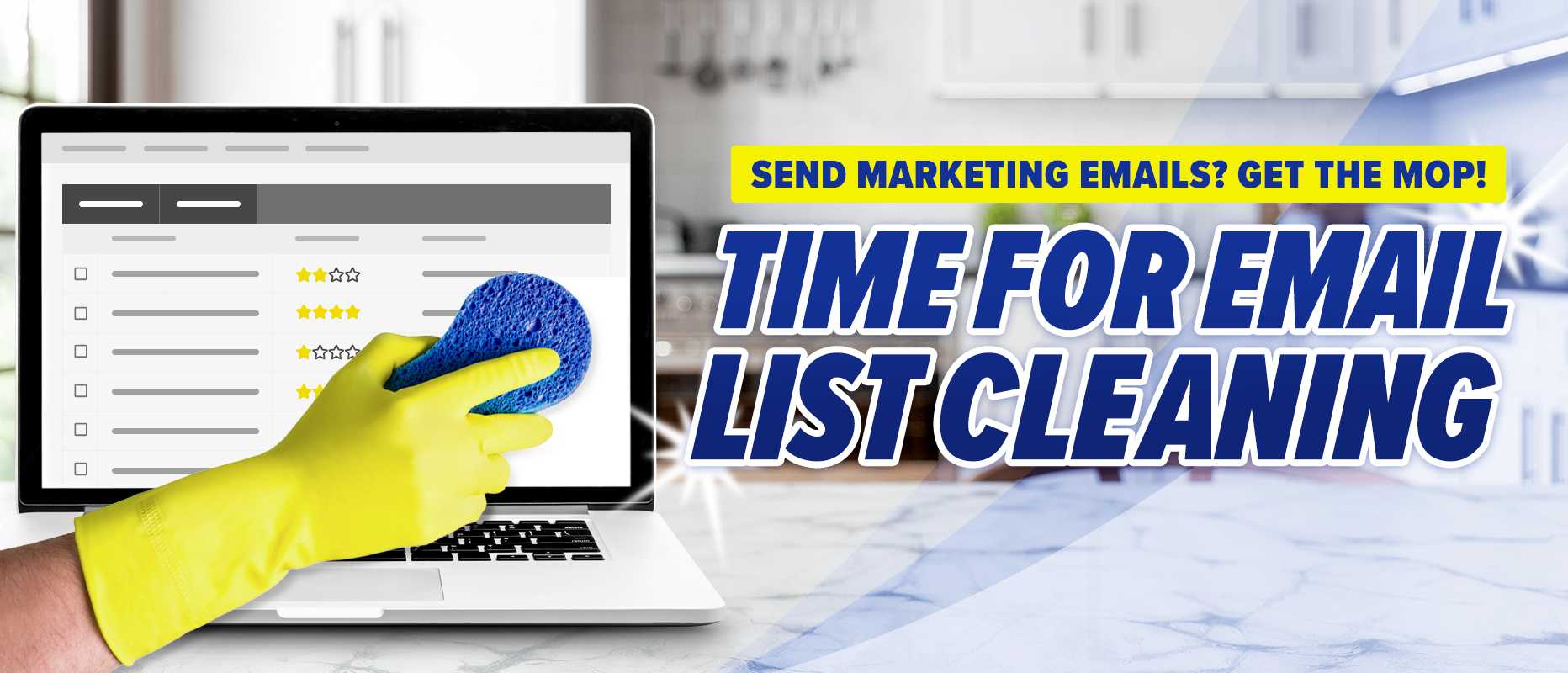Email List Cleaning: Really? Do I Have to?
With Apple dropping its iOS 15 update in late September, their Mail Privacy Protection (MPP) feature is taking hold, and the need for email list cleaning is now at an even greater premium than ever before.
Why? Because MPP prevents senders from seeing if and when recipients opened their emails, it renders “opens” an unreliable metric. As iOS 15’s adoption among iPhone users continues to increase (and considering Apple has captured more than half of the U.S. cell phone market), the number of opens your marketing emails receive will no longer determine your email sender reputation.
What’s an email sender reputation?
An email sender reputation is a score that an Internet Service Provider (ISP) assigns to an organization that sends email. It’s a crucial component of your email deliverability. The higher the score, the more likely that an ISP will deliver emails to the inboxes of recipients on their network, meaning emails don’t get filtered out as spam, promotions, etc.
Your huge list of contacts that you’ve been growing for the past 10+ years without any real opt-in strategy or scrubbing over that time isn’t something to brag about. Actually, quite the opposite. And if you’ve seen minimal opens and few clicks despite having catchy subject lines and solid email content, chances are you’re suffering from poor deliverability.
What is email deliverability?
Email deliverability is when an email successfully arrives in the person’s inbox. More specifically, in subscribers’ inboxes. Limited opens and clicks may be just the tip of the iceberg, signaling that the real issue is a poor sender reputation that you’ve earned over time by emailing people that didn’t ask/care/want to receive your messages.
If you’re in this boat, and you never worried about subscribers, chances are you annoyed people along the way by sending unsolicited emails. Consequently, they marked them as spam, which is on par with lodging a formal complaint, and tanked your sender reputation.
Right the ship with email list cleaning
Don’t let the mention of list cleanup make you cringe. Yes, it brings with it terms like “email list hygiene,” but rest assured it doesn’t have to feel like a trip to the dentist. List cleaning doesn’t have to be the tedious, manual process of going through contacts one-by-one and ensuring all critical fields are entered correctly. (Although if you use merge fields, that’s not a bad project for your intern once you severely trim your list. More on that to follow…)
Email list cleaning can be as simple as using your email service provider’s segmenting tools to see who hasn’t opened any of your emails. That’s a good place to start. How far you look back depends on how many emails you send, how often you send them and what industry you’re in. It often makes sense for B2B businesses to look back a year, and six months is a good engagement barometer for companies with more active email marketing programs.
What am I looking for?
Test different look-back periods across different audiences and see if you can glean anything telling. Whatever interval you decide to use, if a contact hasn’t opened any of your last 20 emails, it’s safe to say they’re not an engaged user.
Take the following example of a company that has an eCommerce website. This analysis was conducted in early October 2021, just after Apple dropped iOS 15 and MPP. You can see that despite the number of subscribers (9,601) that they send to, one-third of them (3,618) did not open a single one of the last 50 emails they were sent.

What does it mean for the viability of my list?
That third of the list may not have received those emails at all. They could be getting filtered out as spam, maybe they got buried in a promotions folder, or maybe they land in their inbox and they just don’t give two shi — seconds — to look at them. The reason doesn’t matter. They aren’t reading the emails, and as far as the ISP is concerned, they don’t want to receive these messages.
Typically, it’s the same core group of contacts that repeatedly open and click to engage with your marketing emails. And more often than not, some version of the old 80/20 rule applies. After reviewing your email campaign results, you’ll most likely see that a relatively small percentage of contacts account for the vast majority of your email engagement.
Unengaged contacts impact email marketing
So, what if we release our grip on the security blanket that is that top line number of contacts, no matter how big or how long we have been growing it, and lop off those that haven’t engaged? We will likely see our list of viable contacts shrink considerably. It can be cut down to as much as 1/3 of your initial contact count or more, which can be scary.
But understand those unengaged contacts are doing much more than nothing. They are hurting your email sender reputation and deliverability to the small percentage of people who actually want to receive your emails.
But why do email listing cleaning now?
The time is now because of MPP. Since the efficacy of opens will continue to erode, it’s smart to draw a line in the sand while you still have good open data to work with from pre-MPP.
By sending emails specifically to those who want to receive your content (ignoring those who don’t), you’re increasing the chances of those people receiving your messages in their main inbox and avoiding spam filters.
At Ridge Marketing, we have gone through email list cleaning exercises with multiple clients and seen how, despite cutting our send list size significantly, we’ve returned some of the highest click numbers ever from that smaller, select group.
Improved deliverability is the real driver
Of course, our open and click rates, the percentages, will be artificially high because we manipulated the numbers. Since we shrunk down the number of people we are sending to considerably, the inputs are much lower to start. Given that this is a highly-engaged group and their opens and clicks remain strong, the percentages of open and click rates will be inflated compared to your historical rates. Although it makes for good reporting, that’s not the point.
We are seeing positive results, as far as the number of opens, and a truer number of clicks. We expect they’ll continue trending this way given that “cutting the fat” of unengaged users should improve deliverability to engaged users over time. With this, more engaged users will receive more of our messages in their inboxes as our email sender reputation grows.
This is just the beginning…
Stay tuned for part two of this article where we look at the results of email list cleaning. Spoiler alert, they are impressive! We’ll explain how Ridge Marketing maximizes email marketing engagement so you can implement these best practices in your own campaigns. Of course, if you have questions or can’t wait for the sequel, contact us.
We’re happy to help you make your email marketing efforts shine.

